Latest DePIN News
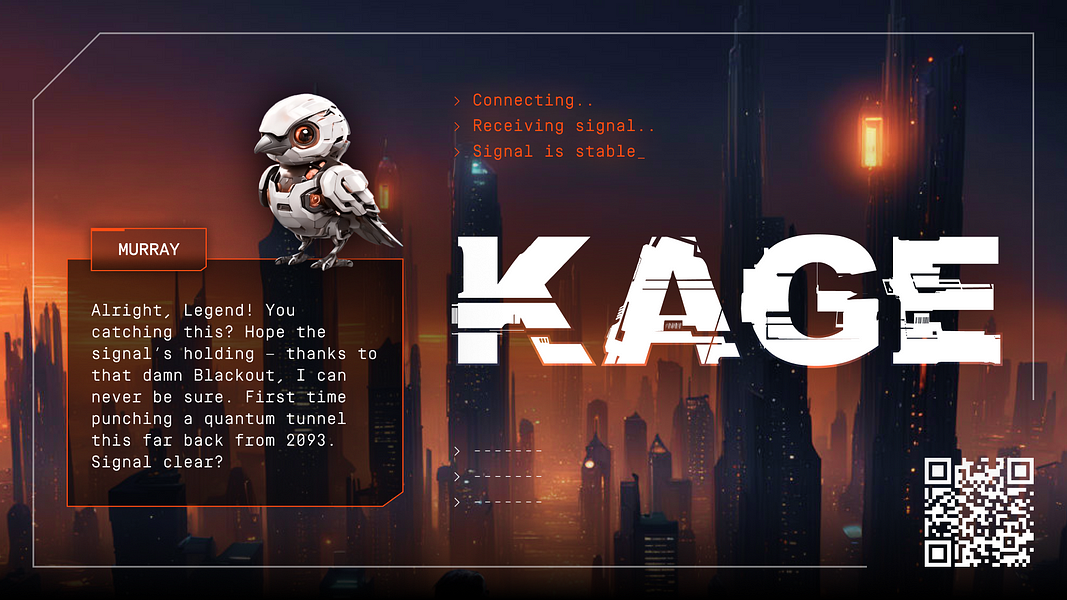
a year ago
Kage: The First DePIN Play-to-Earn Mobile Game Launches
Kage is revolutionizing the mobile gaming landscape with its launch as the first-ever DePIN Play-to-Earn game. Players engage in indoor navigation and low-power wayfinding solutions while earning cryptocurrency by detecting wireless networks. The game rewards participants with $CHIRP tokens for contributing to the creation of a community-owned geolocation database. Currently in its alpha pre-TGE release, Kage allows players to earn tokens even before the Token Generation Event (TGE), with two stages of reward distribution planned: one shortly after the TGE and another before the main game release.
To get started with Kage, players must download the app, which is currently available only on Android devices. After installation, users can create an account or sign in, guided by an in-game assistant named Murray. The game features multiple interfaces, including a scanning screen where players can detect wireless signals and earn Data Chips. The gameplay encourages players to explore their surroundings to detect various network types, including Wi-Fi, Bluetooth, and cellular towers, while adhering to specific rules to ensure fair play and accurate data collection.
In addition to the core gameplay, Kage introduces a unique scoring system where players earn Data Chips based on the networks they detect. The game also features leaderboards to track player progress, with rewards distributed to top participants. As part of the ongoing development, Kage will soon launch the Wings of Chronos campaign, where players can hunt for rare objects and earn additional tokens. With Kage, players are not just gaming; they are actively participating in the evolution of decentralized infrastructure and the Internet of Things (IoT).
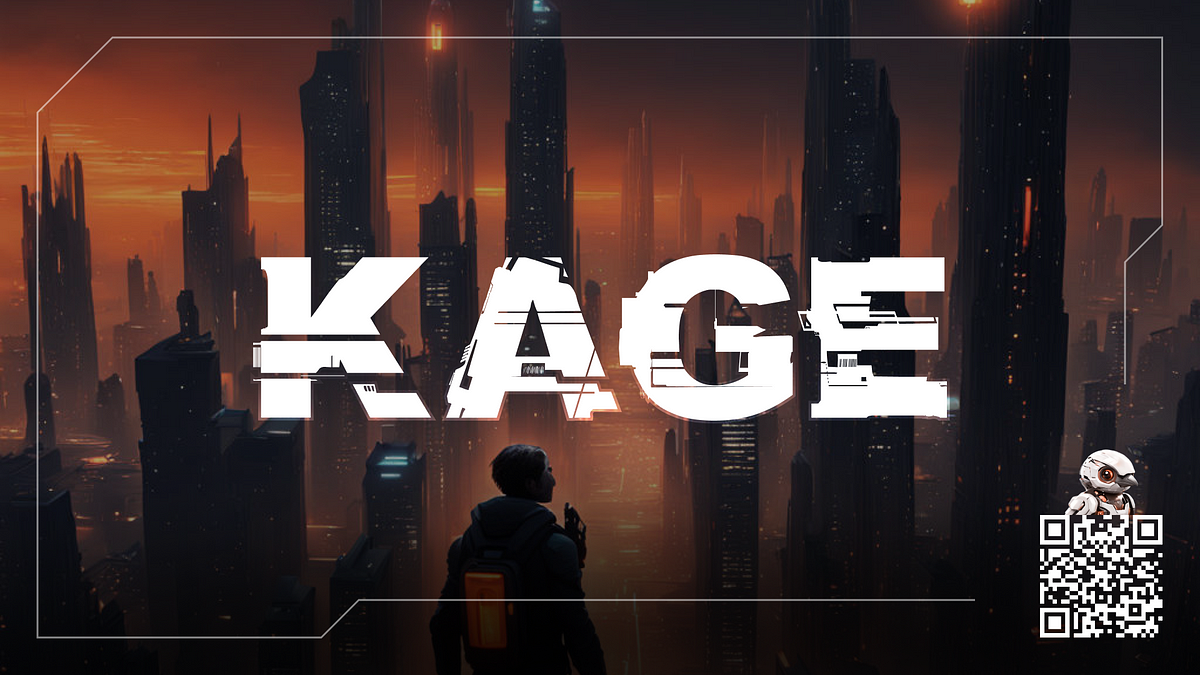
a year ago
Kage: Revolutionizing Geolocation Data Collection Through Gaming
Kage, developed by Chirp, is emerging as a revolutionary solution in the gaming industry, particularly in the realm of geolocation data. Unlike traditional games like Pokémon Go, which have been criticized for collecting user data without consent, Kage empowers players by rewarding them for their contributions to building a global geolocation database. This innovative Play-to-Earn model not only allows users to earn cryptocurrency but also plays a vital role in enhancing indoor navigation services, an area that has seen limited advancements despite the growing demand for precise indoor positioning systems. The indoor positioning market is projected to grow significantly, and Kage aims to capitalize on this by gamifying the process of data collection through real-world activities.
The gameplay of Kage immerses players in a narrative where they act as Data Hunters in a future where connectivity has collapsed. Guided by an AI named Murray, players engage in activities such as walking or driving to detect wireless signals, which they convert into in-game points called Data Chips. These chips not only enhance the player's status on leaderboards but also translate into tangible rewards in the form of $CHIRP tokens. The game incorporates elements like missions, quests, and community-driven features, ensuring that players remain engaged while contributing to a larger purpose — the restoration of connectivity and the creation of a robust indoor navigation ecosystem.
Kage also introduces exciting campaigns like Wings of Chronos, where players hunt for rare items that unlock additional rewards. By shifting the data collection model from corporate giants to the community, Kage not only provides financial incentives for players but also democratizes access to valuable geolocation data. This approach positions Kage as more than just a game; it is a platform that bridges the gap between gaming, IoT, and decentralized technology, ultimately reshaping the future of how we interact with our environments and the data we generate.

a year ago
Bitcoin Dominance Declines Amid New Treasury Nomination and Market Developments
In recent developments within the cryptocurrency market, Bitcoin's dominance has seen a decline, as Ethereum and Bitcoin begin to reverse their trends. Notably, pro-crypto nominee Bessent has been selected for a position in the Treasury, indicating a potential shift towards more favorable policies for the crypto sector. Analysts like Van Eck predict that Bitcoin could reach $180,000 in this cycle, further fueling optimism among investors. Additionally, the Chicago Board Options Exchange (CBOE) is set to launch Bitcoin ETF-linked options in December, which could enhance market accessibility and liquidity.
Meanwhile, the crypto community is facing challenges as the streaming platform PumpFun has come under fire for its content during live broadcasts. In a positive note for the industry, ZA Bank in Hong Kong has initiated crypto trading services, marking a significant step towards mainstream adoption in the region. Furthermore, Aethir has announced a $100 million investment in new crypto AI projects, showcasing the intersection of artificial intelligence and blockchain technology. This aligns with Salesforce CEO's vision of AI's future being dominated by agents.
In other news, Cantor Fitzgerald has acquired a 5% stake in Tether, solidifying its position in the stablecoin market. However, Polymarket has decided to block French traders, reflecting ongoing regulatory challenges. The SEC commissioner is set to leave following Gensler's tenure, which may lead to changes in regulatory approaches. As the decentralized science (DeSci) movement draws parallels to early DeFi in 2019, the Monad project has rolled out its testnet, signaling continued innovation in the blockchain space.
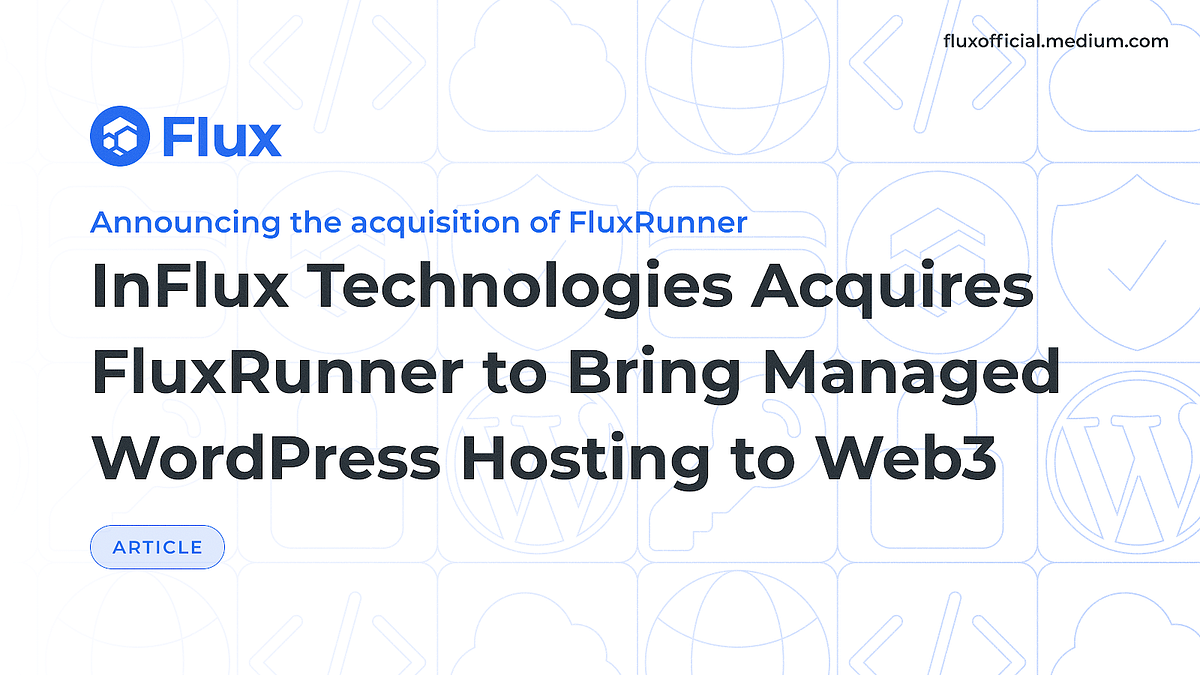
a year ago
InFlux Technologies Acquires FluxRunner to Revolutionize Decentralized WordPress Hosting
In a significant move for the decentralized web hosting landscape, InFlux Technologies has acquired FluxRunner, a pioneering managed WordPress hosting service. This acquisition aims to enhance the performance, scalability, and affordability of WordPress hosting on the decentralized cloud. FluxRunner stands out as the first service to utilize FluxCloud's decentralized infrastructure, offering users a robust toolkit that includes automated backups and extensive scaling capabilities. With dedicated resources such as up to 12 core CPUs and 4 GB of RAM, FluxRunner promises seamless performance that is unmatched in the current market.
FluxRunner is designed to elevate the WordPress experience by providing premium features like object caching, which accelerates website performance, and an embedded block editor for enhanced customization. These tools allow users to create unique designs and animations without sacrificing speed or exceeding budget constraints. The merger with Flux is set to expand FluxRunner's capabilities, enabling lightning-fast static asset delivery and massive computational power to ensure rapid page loading times. This collaboration marks a significant step towards creating a more decentralized and user-friendly internet.
The CEO of InFlux Technologies, Daniel Keller, expressed enthusiasm about the acquisition, highlighting the alignment of FluxRunner's mission with their vision for a decentralized web. FluxRunner's founder, Onur Oztaskiran, echoed this sentiment, emphasizing the importance of building an accessible Web3 ecosystem. This merger not only enhances the offerings for WordPress users but also underscores a commitment to privacy, security, and data control. As Flux continues to innovate, it aims to redefine the standards of performance and affordability in the decentralized hosting space, with FluxRunner at the forefront of this transformation.
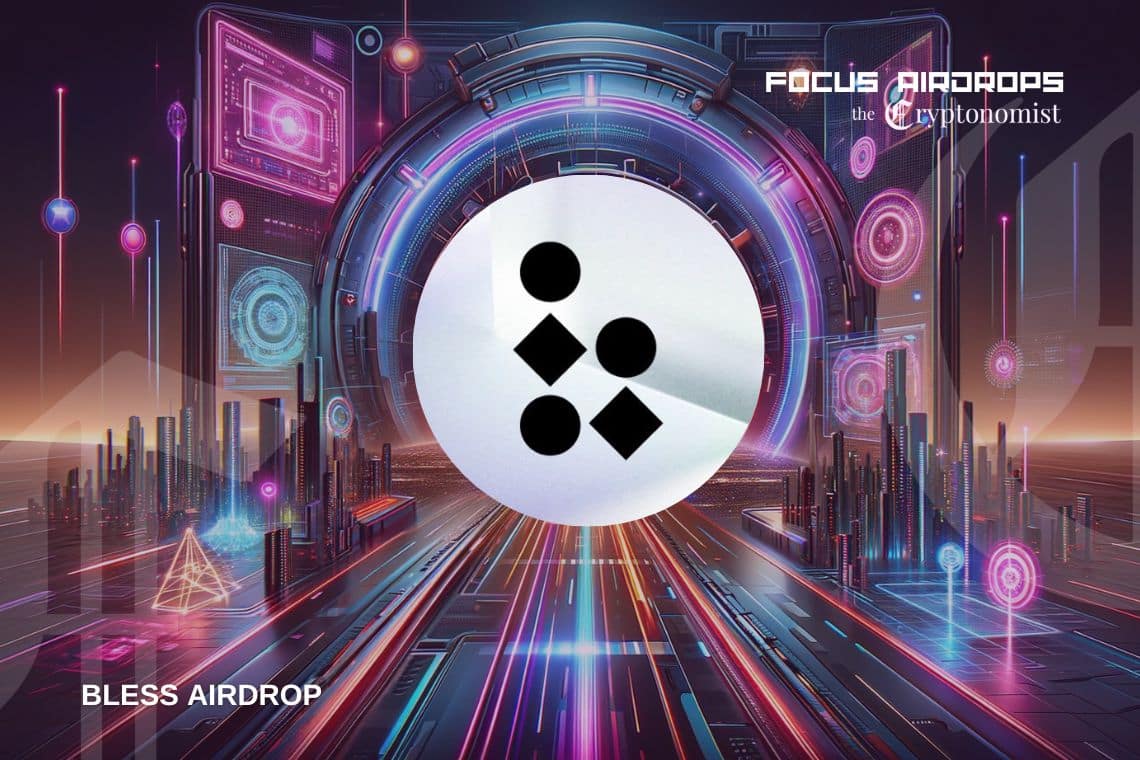
a year ago
Bless: A New DePIN Platform Offering Crypto Airdrops
In the rapidly evolving world of blockchain technology, Bless has emerged as a promising DePIN platform, recently launching its incentivized testnet. This platform, previously known as Blockless, aims to create a network of interconnected devices to meet the increasing computational demands of the AI sector. Users can participate in the project by simply downloading a browser extension, allowing them to share their bandwidth and contribute to the computational needs of various applications and decentralized services. In return, Bless rewards participants with tokens, fostering a community-driven model that shifts focus from institutional players to individual operators.
The Bless platform's airdrop program is designed to be user-friendly, mirroring the successful model of its competitor, Grass. After downloading the browser extension, users can easily monitor their network-sharing activities through the Bless dashboard. To fully engage with the platform, users must activate a virtual DePIN device, or node, which facilitates communication with other infrastructures. Once operational, Bless automatically matches users' devices to appropriate workloads, allowing them to accumulate points effortlessly, which will later be converted into tokens. The anticipated airdrop is expected to occur by the second quarter of 2025, following the mainnet launch projected for early 2025.
While the potential earnings from Bless's airdrop may not be life-changing, they should not be overlooked. Similar to Grass, which has provided users with substantial rewards, Bless offers an opportunity for users to earn without any financial commitment. The simplicity of participation—requiring only a device and an internet connection—makes it accessible to a broad audience. Furthermore, the growing interest in DePIN projects among crypto investors suggests that the initial listing of Bless tokens could yield favorable outcomes. Historical data from similar projects indicates that holding onto low-value airdrops can lead to significant gains, making Bless an attractive prospect for those looking to engage in the blockchain space with minimal effort.

a year ago
Filecoin Poised for Breakout Amid Bullish Market Sentiment
Filecoin (FIL), a blockchain-based digital storage platform, is showing signs of potential upside momentum after being confined to a tight trading range for nearly five months. Currently, the cryptocurrency is trading between the $3.18 and $4.80 levels, with a bullish market sentiment prevailing across the crypto landscape. Recent technical analysis indicates that FIL has formed a bullish price action pattern on its daily chart, gaining strong support from both traders and investors. As the price approaches the breakout level, aggressive trading activity has been noted, particularly as FIL nears the critical $4.80 resistance level.
If Filecoin successfully breaks out of this consolidation zone and closes a daily candle above $4.80, analysts predict a potential surge of up to 47%, which could see the asset reaching the $7.20 mark. The current trading position above the 200 Exponential Moving Average (EMA) further supports the uptrend, while the Relative Strength Index (RSI) suggests that FIL is in oversold territory, indicating a possible rally. This positive outlook is bolstered by increasing trader participation, as evidenced by a significant rise in open interest (OI) over the past 24 hours.
On-chain metrics reveal that FIL's OI has surged by 7.9% in the last day, reflecting heightened trader activity. Major liquidation levels are identified at $4.43 on the lower side and $4.75 on the upper side, with traders currently overleveraged at these positions. If the price rises to $4.75, nearly $1.5 million in short positions may be liquidated, while a drop to $4.43 could lead to the liquidation of approximately $6.21 million in long positions. Overall, the combination of bullish technical indicators and strong on-chain metrics suggests that Filecoin is poised for a breakout, with bulls currently dominating the market.

a year ago
Exciting Updates on Storage V2 and Mobile Apps Launch
The upcoming Storage V2 update is generating excitement as it promises significant improvements and fixes. Key features include enhancements to the Key Management System (KMS), which will allow multiple users to share access to the same wallet and storage allocations. Additionally, the update will enable video streaming for applications like Vult and Blimp. The rollout is anticipated by the end of the week, marking a pivotal moment for users looking for enhanced functionality and collaboration within the platform.
In parallel, the development of mobile applications for Vult is progressing rapidly. The team is on the verge of releasing the app on both iOS and Android platforms. The integration of KMS is nearing completion, and the implementation of video streaming features is ongoing. Active testing is being conducted to ensure that all functionalities are refined and optimized before the official launch, promising a seamless user experience for mobile users.
Moreover, the marketing efforts are gaining momentum with the initiation of ad campaigns across various platforms. Currently, ads on Reddit and Google are live, while Brave ads are expected to launch within the next two days. Additionally, a campaign on X is set to commence shortly. These marketing strategies aim to increase visibility and engagement, driving user adoption as the new features and applications become available. Stay tuned for more updates as the team continues to make strides in these developments!
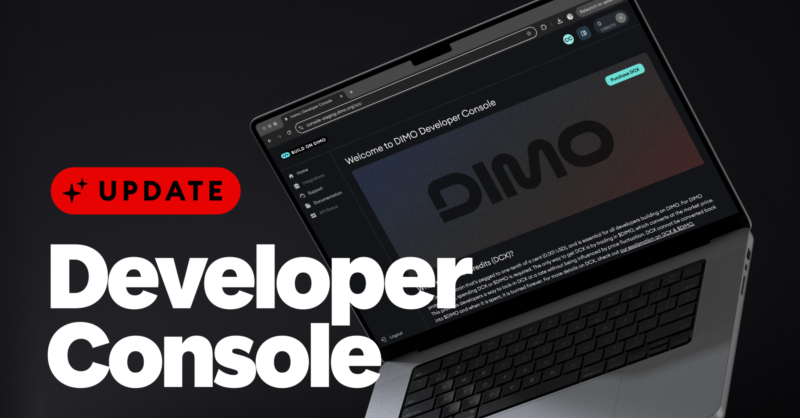
a year ago
DIMO Developer Console Upgraded to Version 1.0 with New Features
The DIMO Developer Console has recently undergone significant enhancements, marking its official upgrade to version 1.0. Initially launched in beta in August, the console provided developers with a self-service dashboard to create applications for vehicles. Feedback from EthOnline hackers in September played a crucial role in shaping the new features that have now been integrated. One of the most notable updates is the support for DIMO Global Accounts, which streamlines account management by allowing users to sign in with existing Google or GitHub accounts while automatically provisioning a DIMO Global Account. This improvement simplifies the onboarding process for both web3 and web2 developers, removing previous barriers to entry.
In addition to Global Accounts, the DIMO Developer Console has introduced DIMO Credits (DCX), a stablecoin currency that developers use to access vehicle data and perform protocol operations. The console now features a fiat on-ramp, enabling users to purchase DCX using debit or credit cards through an integration with Stripe. This addition makes it easier for developers to obtain the necessary credits for their projects, fostering a more accessible development environment. For those who prefer cryptocurrency, existing balances of $DIMO, $POL, or $WMATIC can still be utilized.
To further support developers, DIMO has continuously improved its documentation, offering expanded resources and guides for the latest APIs and SDKs. The introduction of the 'Login With DIMO' React component SDK simplifies the integration of authentication methods into applications, providing developers with customizable options for user login. DIMO aims to create an ecosystem reminiscent of the App Store's impact on mobile computing, encouraging innovation and creativity in building applications that leverage the extensive vehicle data available on the DIMO network. With these advancements, the DIMO Developer Console is poised to empower developers in their quest to create groundbreaking automotive applications.
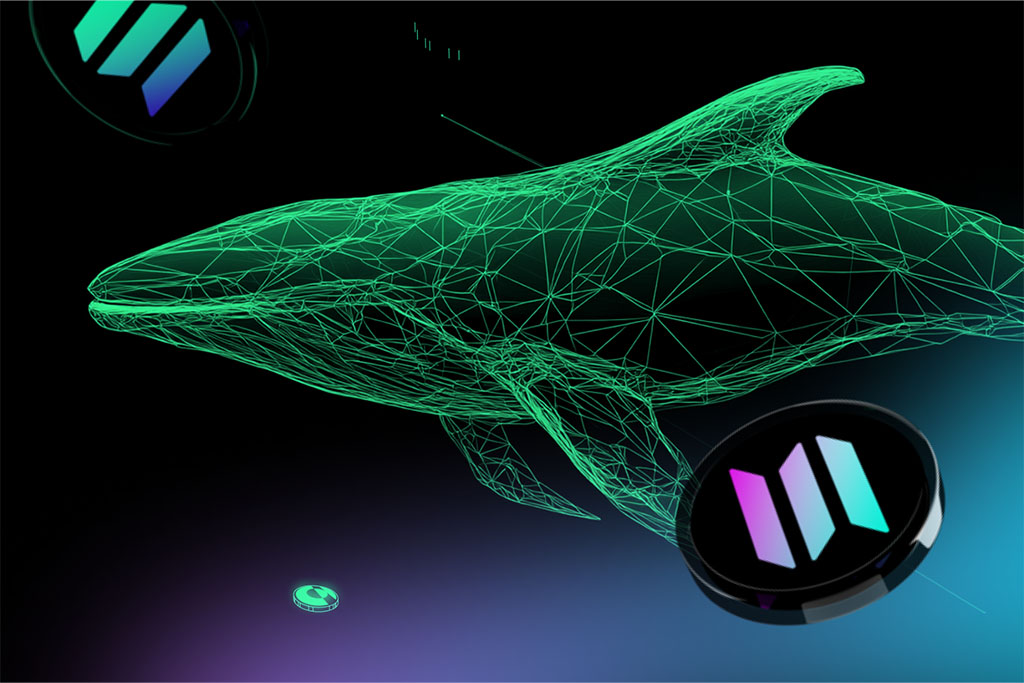
a year ago
Akash Network and Lunex Network Lead the Charge in Cryptocurrency Innovation
The cryptocurrency market is witnessing significant developments, particularly with the Akash Network's DePIN protocol, which has recently crossed a billion-dollar market cap. This surge has led to a notable increase in the Akash price, reflecting growing investor confidence. Meanwhile, Solana is on the brink of achieving a new all-time high (ATH), with its market cap inflow allowing it to surpass BNB. The excitement surrounding Solana's impending ATH is not just a win for the platform but also for the broader cryptocurrency ecosystem, showcasing its potential for mainstream adoption and robust development activity.
In the realm of decentralized finance (DeFi), Lunex Network has emerged as a promising new player. This hybrid exchange offers a unique solution by facilitating cross-chain trading with over 50,000 trading pairs and a zero-fee structure. Lunex Network aims to simplify DeFi for both novice and experienced traders, making it more accessible to retail investors. With an impressive liquidity of $2.95 million already secured, Lunex is positioning itself as a key facilitator in the DeFi space, potentially democratizing access to this lucrative market.
The rise of Akash Network, Solana, and Lunex Network highlights a broader trend towards decentralized innovation beyond traditional finance. Akash's recent 10% surge in the last 24 hours and a remarkable 36% increase over the past week emphasize its potential to disrupt conventional cloud services. As the demand for decentralized, trustless platforms grows, these tokens present exciting investment opportunities. With Solana nearing its ATH and Akash's momentum, investors are keenly watching these developments, while Lunex Network continues to attract attention with its DeFi offerings.

a year ago
Enhancing Context Recall in Retrieval-Augmented Generation
Retrieval-augmented generation (RAG) has emerged as a pivotal method for integrating large language models (LLMs) into specialized business applications, enabling the infusion of proprietary data into model responses. Despite its effectiveness during the proof of concept (POC) phase, developers often face significant accuracy drops when transitioning RAG into production. This issue is particularly pronounced during the retrieval phase, where the aim is to accurately fetch the most relevant context for a given query, a metric known as context recall. This article delves into strategies for enhancing context recall by customizing and fine-tuning embedding models, ultimately improving RAG's performance in real-world applications.
RAG operates in two main steps: retrieval and generation. In the retrieval phase, the model converts text into vectors, indexes, retrieves, and re-ranks these vectors to identify the top matches. However, failures in this phase can lead to missed relevant contexts, resulting in lower context recall and less accurate generation outputs. One effective solution is to adapt the embedding model, which is designed to understand relationships between text data, to produce embeddings that are specific to the dataset being used. This fine-tuning allows the model to generate similar vectors for similar sentences, enhancing its ability to retrieve context that is highly relevant to the query.
To improve context recall, it is essential to prepare a tailored dataset that reflects the types of queries the model will encounter. This involves extracting a diverse range of questions from the knowledge base, paraphrasing them for variability, and organizing them by relevance. Additionally, constructing an evaluation dataset helps assess the model's performance in a realistic setting. By employing an Information Retrieval Evaluator, developers can measure metrics like Recall@k and Precision@k to gauge retrieval accuracy. Ultimately, fine-tuning the embedding model can lead to substantial improvements in context recall, ensuring that RAG remains accurate and reliable in production environments.
Signup for latest DePIN news and updates